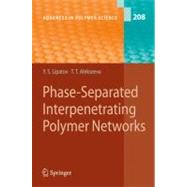
| The Nature of IPNs | p. 6 |
| Introduction | p. 6 |
| Definitions | p. 8 |
| Formation and Structure of Amorphous Polymer Networks | p. 10 |
| Thermodynamics and Phase Separation in IPNs | p. 15 |
| Thermodynamics of IPN Mixing | p. 15 |
| Phase Diagrams of Reacting Systems | p. 16 |
| Miscibility and Immiscibility of IPNs | p. 21 |
| Mechanisms of Phase Separation in IPNs | p. 24 |
| Nucleation and Growth | p. 24 |
| Spinodal Decomposition | p. 35 |
| Binder-Frisch Approach | p. 44 |
| Interfacial Region in IPNs | p. 47 |
| Composition and Ratio of Phases Evolved During Phase Separation | p. 51 |
| Nonequilibrium States of IPNs | p. 52 |
| Heterogeneous Structure and Morphology of IPNs | p. 55 |
| Cross-linking Density in IPNs | p. 56 |
| Free Volume | p. 62 |
| Parameters of Heterogeneous Structure of IPNs | p. 70 |
| Experimental Data on Heterogeneity | p. 73 |
| Sequential IPNs Based on Polyurethane and Styrene-Divinylbenzene Copolymer | p. 74 |
| Simultaneous IPNs Based on Polyurethane and Poly(urethane acrylate) | p. 77 |
| Sequential IPNs Obtained Using Anionic Polymerization | p. 80 |
| Microphase Structure of IPNs Based on PU and Ionomeric PU | p. 84 |
| Reaction Conditions and Microphase Structure | p. 87 |
| Characterization of IPN Structure via Small-Angle Neutron Scattering | p. 91 |
| Features of IPN Morphology | p. 96 |
| Relaxation Transitions and Viscoelasticity of IPNs | p. 103 |
| Application of Mechanical Models | p. 105 |
| Viscoelastic Functions and Relaxation Transitions | p. 111 |
| Viscoelasticity and Curing Conditions | p. 116 |
| Properties of Thermoplastic Apparent IPNs | p. 120 |
| Features of Temperature Transitions | p. 124 |
| Contribution of an Interphase to Viscoelastic Properties | p. 126 |
| Effect of the Domain Sizes on the Glass Transition Temperatures | p. 128 |
| Relaxation Spectra of IPNs | p. 130 |
| Vibration-Damping Properties | p. 137 |
| Determining the Segregation Degree from Parameters of Relaxation Maxima | p. 139 |
| Dependence of Viscoelastic Properties on Segregation Degree | p. 143 |
| Chemical Kinetics of IPN Formation and Phase Separation | p. 147 |
| General Premises | p. 147 |
| Kinetic Characteristics of IPN Formation | p. 148 |
| Mutual Influence of the Constituent Networks on the Kinetics of IPN Formation | p. 157 |
| Relation Between Reaction Kinetics and Microphase Separation | p. 164 |
| Semi-IPN Based on Styrene-DVB Copolymer and PBMA | p. 164 |
| Semi-IPN Formed by Curing PU Network in the Presence of PBMA | p. 167 |
| IPNs Produced by Simultaneous Curing of Polyurethane and Polymerization of Butyl Methacrylate | p. 169 |
| Thermodynamics and Kinetics of Phase Separation | p. 173 |
| Reaction Kinetics and Properties of Evolved Phases | p. 176 |
| Kinetics of Formation of Sequential IPNs | p. 179 |
| Role of Kinetics in Formation of an Interphase and Segregation | p. 181 |
| Description of Reaction Kinetics in Terms of Phase Transition | p. 183 |
| Some Features of Rheokinetics and Structure States of Semi-IPNs During Their Formation | p. 186 |
| Special Features of Self-Organization During the Formation of IPNs | p. 191 |
| Kinetics of IPN Formation in the Presence of Filler | p. 194 |
| Compatibilization in Phase-Separated IPNs | p. 199 |
| General Premises | p. 199 |
| Factors with Influence on Determining IPN Compatibility | p. 201 |
| Compatibilization in IPNs Based on PU/PBMA | p. 203 |
| Introduction of Internetwork Grafting | p. 204 |
| Introduction of Compatibilizers | p. 207 |
| Compatibilization in IPNs Based on PU/PS | p. 208 |
| DMA Investigation | p. 210 |
| DSC Measurements | p. 214 |
| References | p. 218 |
| Author Index Volumes 1-209 | p. 229 |
| Subject Index | p. 233 |
| Table of Contents provided by Ingram. All Rights Reserved. |
The New copy of this book will include any supplemental materials advertised. Please check the title of the book to determine if it should include any access cards, study guides, lab manuals, CDs, etc.
The Used, Rental and eBook copies of this book are not guaranteed to include any supplemental materials. Typically, only the book itself is included. This is true even if the title states it includes any access cards, study guides, lab manuals, CDs, etc.